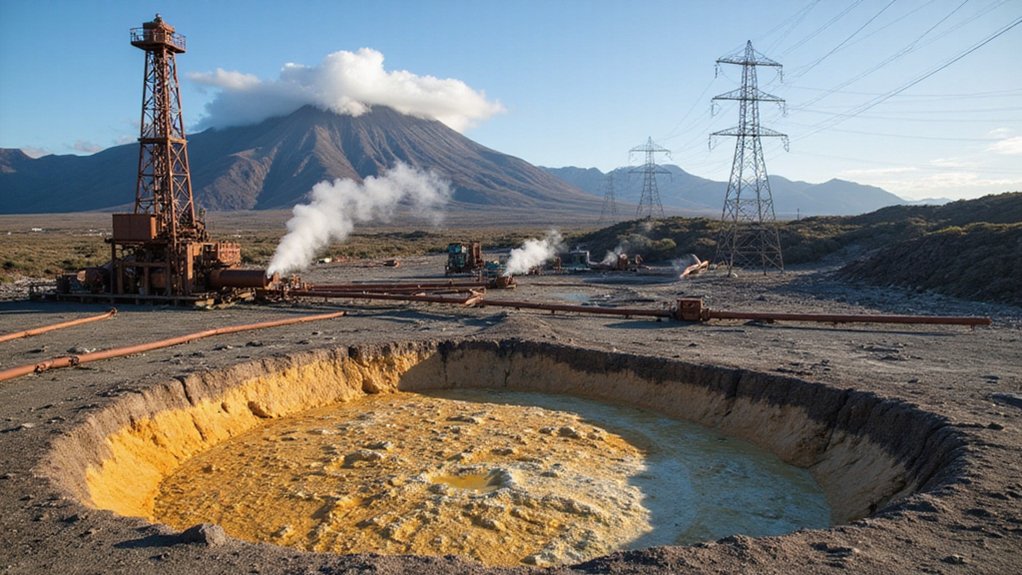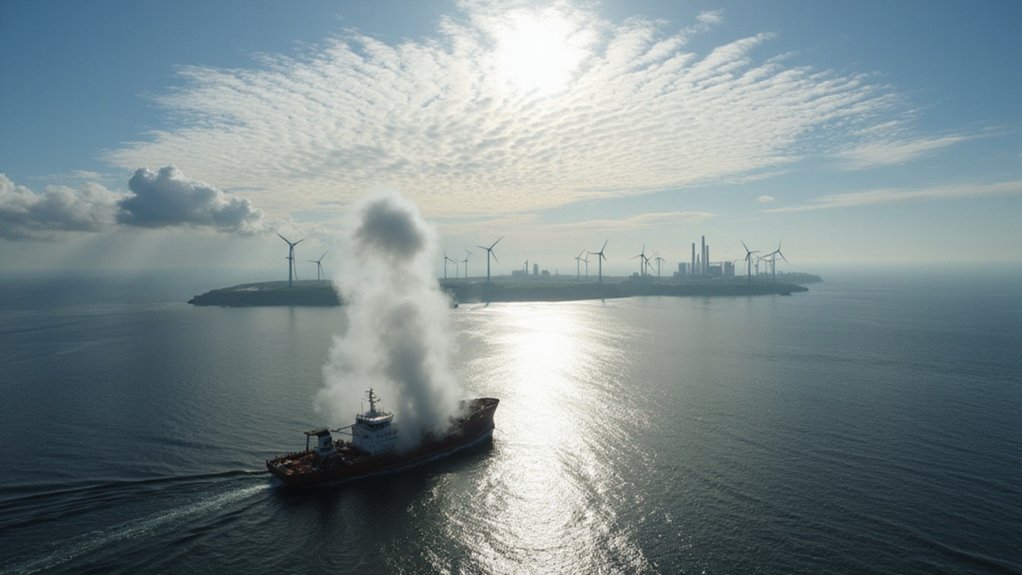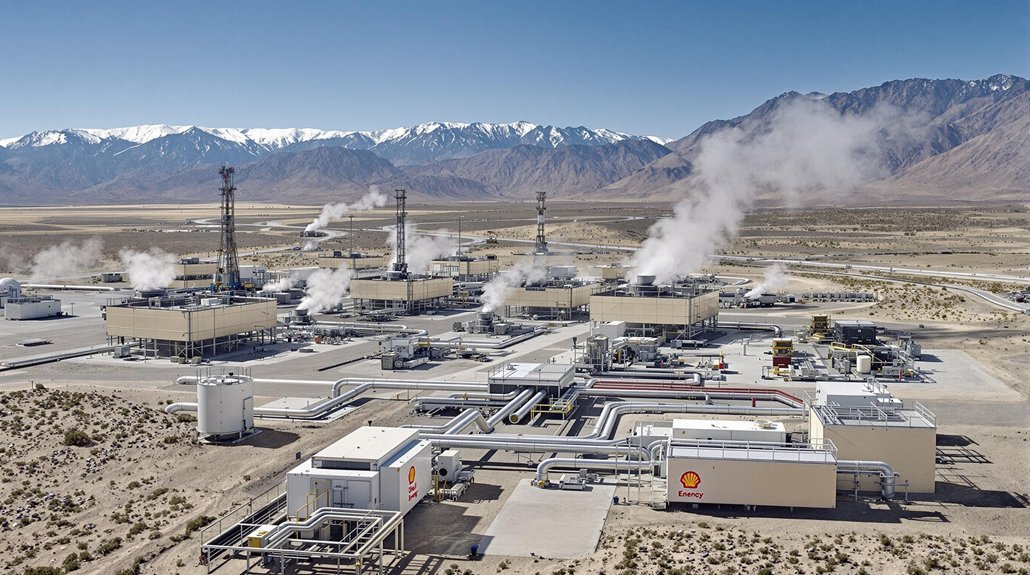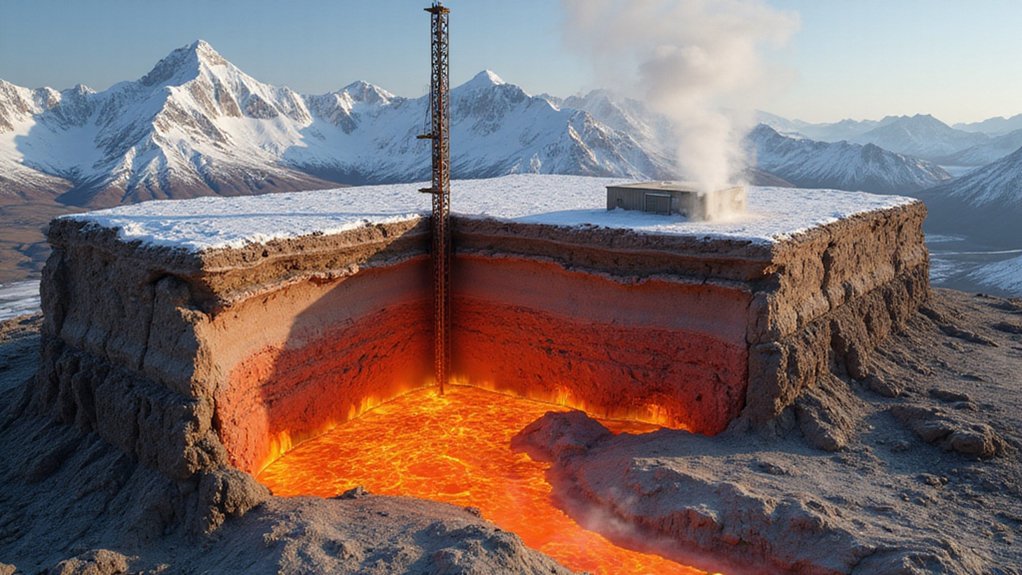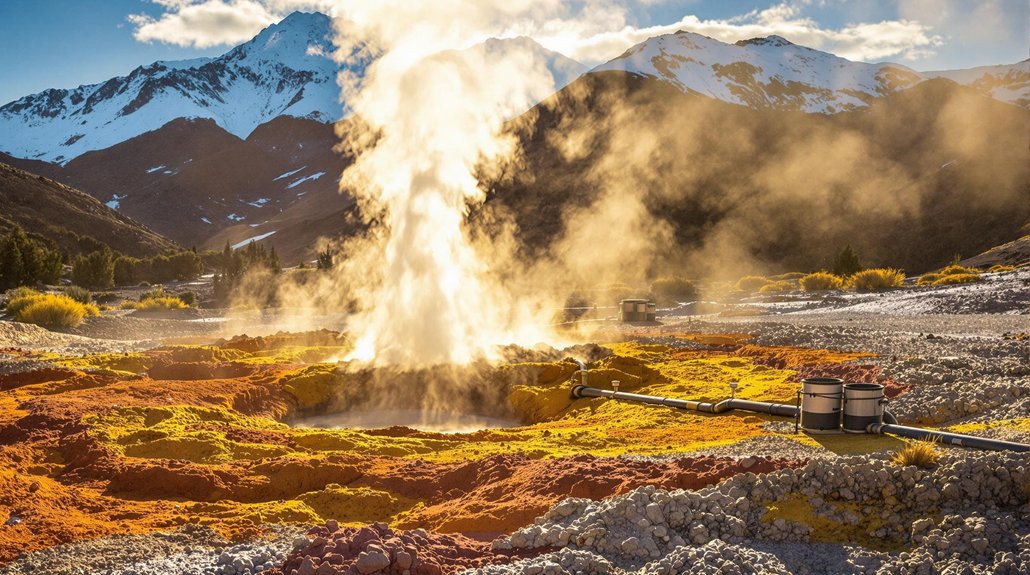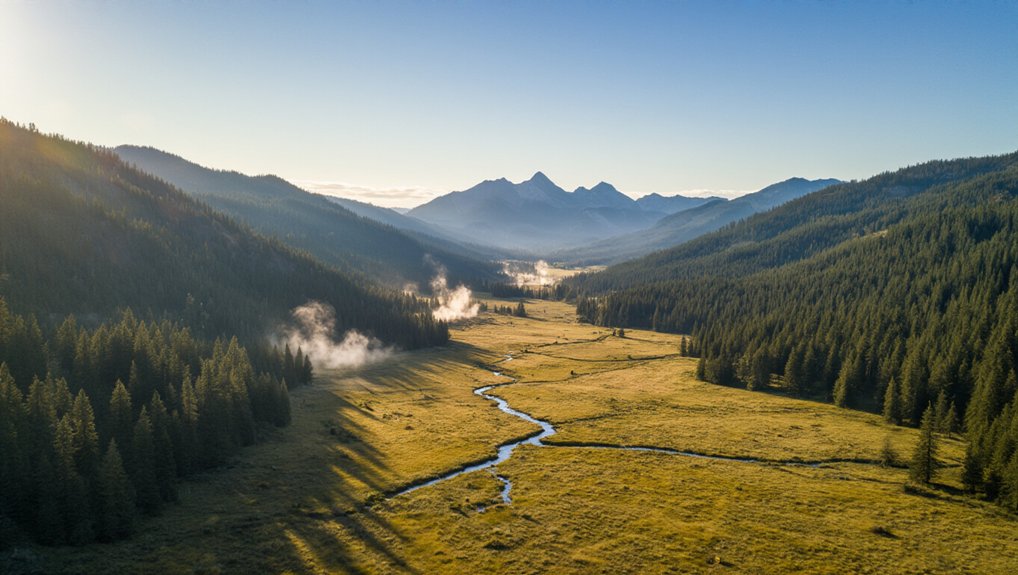Geothermal energy remains stuck in “emerging” status despite century-old technology. Why? It’s picky about location—90% of capacity sits in just ten countries. The startup costs? Astronomical. Up to $7 million per megawatt before generating a single watt. Then there’s the earthquakes, toxic emissions, and reservoir depletion. Don’t forget the regulatory nightmare and transmission headaches. The planet’s literal hottest renewable keeps getting the cold shoulder for good reason.
While renewable enthusiasts tout geothermal energy as Earth’s unlimited underground battery, the reality hits harder than a diamond-tipped drill bit. This century-old technology remains stubbornly “emerging” despite its conceptual simplicity. The reason? Geography is destiny, folks.
The Earth isn’t cooperating with our clean energy dreams. Geothermal power works wonderfully—if you happen to live in Iceland, the Philippines, or a handful of other geologically blessed locations. Roughly 90% of global capacity exists in just ten countries. Tough luck for everyone else. You can’t just plop a geothermal plant anywhere and expect results.
Then there’s the money problem. Initial costs make solar panels look like bargain bin items. Drilling deep holes isn’t cheap. Sometimes it’s like trying to poke through concrete with a toothpick—except each toothpick costs millions. Exploration alone can bankrupt smaller companies before they extract a single watt. The investment required is staggering, with plants costing between $2-$7 million per megawatt of capacity.
Environmental issues? Yeah, those too. Drilling can trigger earthquakes. Not catastrophic ones usually, but try telling that to nervous locals. Toxic elements sometimes hitch a ride with geothermal fluids. Mercury and arsenic aren’t exactly welcome visitors in groundwater. And hydrogen sulfide emissions remind everyone within smelling distance that something industrial is happening.
Even successful projects face a troubling reality: depletion. Geothermal reservoirs aren’t infinite. They can cool down or lose pressure over time. Engineers must carefully manage reinjection systems or watch their energy yield drop like a stone.
The logistical headaches continue with transmission challenges. Prime geothermal spots rarely coincide with population centers. Those remote locations mean building expensive transmission lines across difficult terrain. This challenge is evident in the U.S., where many geothermal resources lack access to transmission for electricity transport. This contrasts sharply with the technology’s impressive capacity factors that exceed 90% when properly implemented.
The final nail? Regulatory quicksand. Permits, environmental reviews, land use disputes—the bureaucratic obstacle course makes project timelines stretch into decades rather than years.
Geothermal energy works. It’s clean. It’s consistent. But nature, economics, and red tape have conspired to keep this “old” technology perpetually stuck in the “emerging” category.
References
- https://www.twi-global.com/technical-knowledge/faqs/geothermal-energy/pros-and-cons
- https://www.rff.org/publications/explainers/geothermal-energy-101/
- https://www.fws.gov/node/265252
- https://sites.lafayette.edu/egrs352-sp14-geothermal/general-information/challenges/
- https://www.solarreviews.com/blog/geothermal-energy-pros-and-cons
